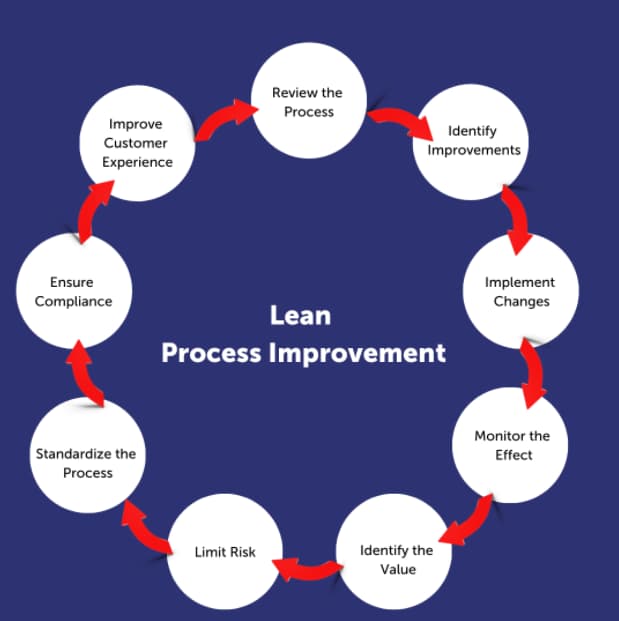Workflow Optimization For Small Businesses
Workflow optimization is a fancy term that simply means improving the efficiency and effectiveness of a business's workflow processes. It involves streamlining tasks, automating processes, and reducing errors to achieve better productivity, quality, and customer satisfaction for your employees as well as for you, the business owner.
Workflow optimization can have significant benefits. It can help reduce operational costs, improve resource allocation, increase employee satisfaction, and enhance customer experience. By optimizing workflow processes, businesses can improve their bottom line by becoming more productive, efficient, and competitive in the marketplace.
In other words, it will allow you to get more work done in a shorter amount of time. Win-Win.

Ways To Implement Workflow Optimization In Your Business
For instance, businesses can automate routine tasks such as data entry and document management to free up employees' time for more strategic work. You can implement an inventory management system (perhaps through your point of sale system) to minimize or eliminate running out of items unexpectedly. Switching from the old paper timecard system to a computerized system to save you time from having to input all that data (while also eliminating data entry errors) which can speed up your payroll process significantly and improve employee relations.
Moreover, workflow optimization can help businesses adapt to changing customer demands and market conditions. By continually reviewing and improving workflow processes, businesses can identify areas that require improvement and take proactive steps to address them. This can help businesses stay ahead of the competition by being agile and responsive to market changes.
The Process Of Optimization
There is not a company on this planet that couldn't benefit from workflow optimization in some way. Unfortunately, most small businesses don't even pay attention to this aspect of business until they run into problems. The process of optimizing workflow involves several steps:
- Define the workflow: The first step is to define the workflow, including the process steps and the stakeholders involved. This means listing every step of every process done within the business. This is a time consuming ordeal, but it is essential to the process.
- Identify bottlenecks: Identify the bottlenecks or inefficiencies in the workflow. These could be caused by manual tasks, redundant steps, or lack of automation. Talk to your employees about this because they are the ones likely dealing with these issues the most.
- Analyze data: Analyze data to identify areas where workflow optimization could have the biggest impact. This could involve looking at performance metrics, such as cycle time, or collecting feedback from your employees, and prioritize the biggest impact items first.
- Redesign the workflow: Based on the analysis, redesign the workflow to eliminate bottlenecks and optimize the process. This could involve streamlining manual tasks, automating processes, or new technology implementation.
- Implement the changes: Once the new workflow has been designed, implement the changes. This may involve training employees on new processes, updating standard operating procedures, or introducing new tools and technologies.
- Monitor and evaluate: Monitor the new workflow to ensure it is working as intended and evaluate its impact. Repeat the data collecting process on performance metrics and gathering feedback from your staff.
- Continuously improve: Workflow optimization is an ongoing process, and it is important to continuously evaluate and improve the workflow to ensure it is meeting the needs of the business, the employees, and your customers.
Automation Can Help With Workflow Efficiency
One of the most efficient ways to optimize your workflow is through the use of automation. Many aspects of a business can be automated with relative easy, freeing up time for you to do the important tasks in your business. Picture this scenario:
You run a service based business, a landscaping business for instance. You go out to a customer's property and provide them with a quote for services. You input that quote into your customer relationship manager (CRM) and it automatically sends out an email thanking the customer for their time and providing them with the quote. It also gives the customer the ability to schedule online and pay for their services.
Once the job is completed, an email is automatically sent out to the customer to ensure the job was completed to their satisfaction. If it was, it asks them to provide a review of your services on your social media pages in order to build your brand reputation. If they report an issue with the problem, it notifies you to contact the customer to make the situation right. If you have multiple crews, your system can also provide you with a report about which crews are providing the best customer experience and which ones are below expectations. The system will also automatically ask the customer to book their next appointment.

With the exception of meeting with the client the first time and handling issues as they arise, you have completely removed yourself from this workflow. In this example, you have automated the booking process, the payment process, ensuring the customer was satisfied, asking for a review, booking their next appointment, and you now have more data about your work crews.
The time you save with automation can save hours (and sometimes days) per week, which you can spend doing higher revenue tasks or spending some much needed downtime with your friends, family, or by yourself.
Overall, workflow optimization is an essential process for businesses of all sizes. It can help them operate more efficiently, reduce costs, increase productivity, and ultimately, achieve greater success in the marketplace.
If your business is in need of increased efficiency, we would love to lend you a helping hand through the process. [thrive_2step id='208']Reach out[/thrive_2step] and let's discuss what you are looking to accomplish.
